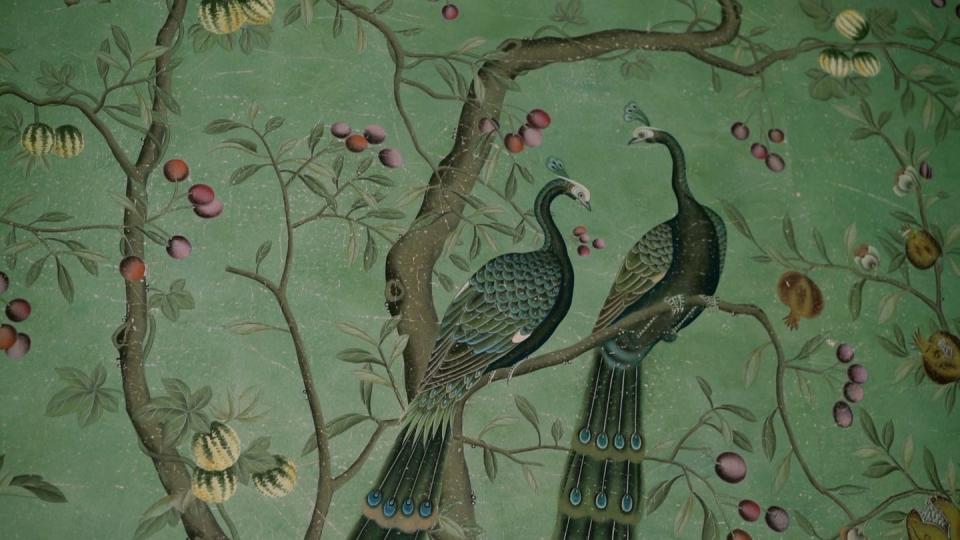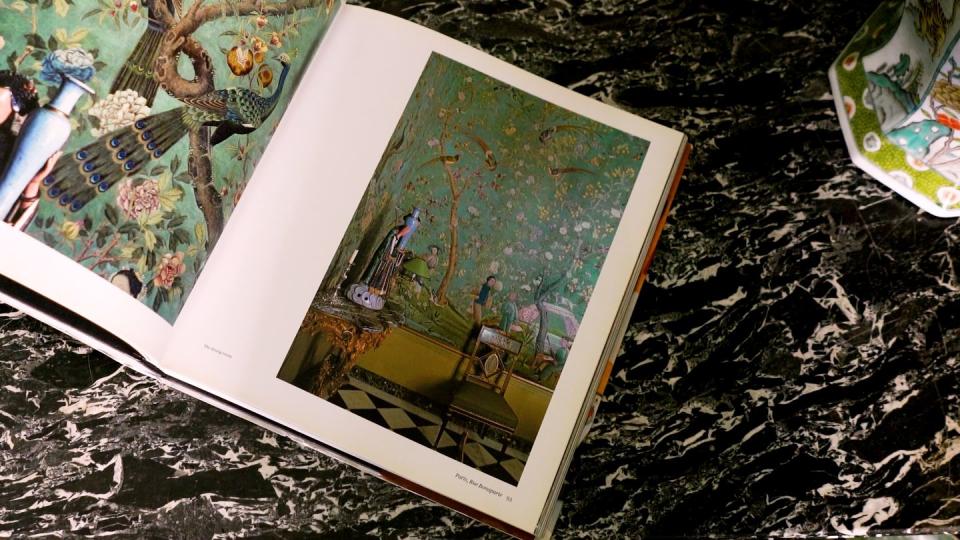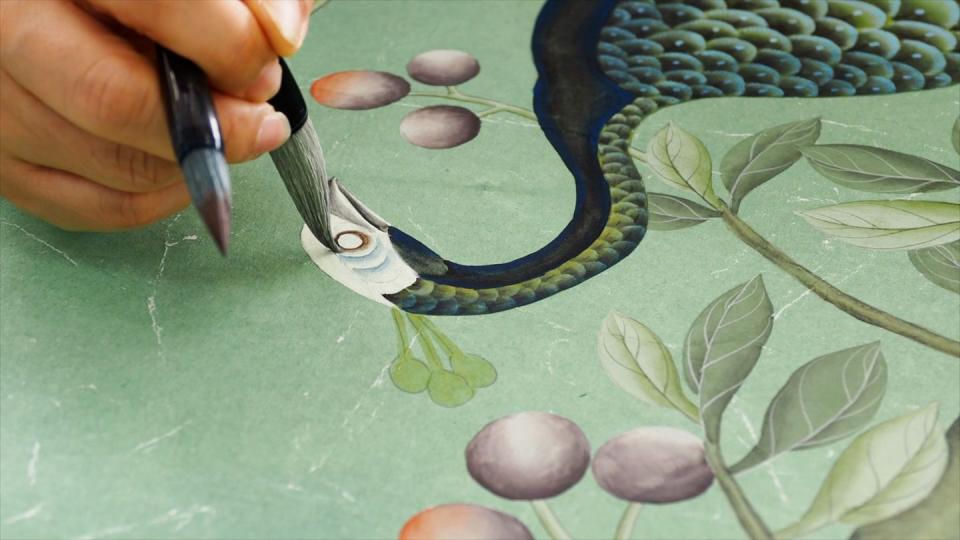Watch These Designer Favorite Handpainted Wallpapers Come to Life
Stunningly intricate and beguilingly textural, the handpainted wallpapers of de Gournay are a perennial—and stylistically wide-reaching—favorite among the world's best designers. India Mahdavi, John Stefanidis, Ken Fulk, and Martyn Lawrence Bullard (plus countless others) have commissioned the company to create bespoke wallcoverings to transform rooms from Paris to Tokyo. But the papers' luminous patina, rich texture, and delightful details may belie, on first glance, the labor that goes into them and the history they represent.

Though the company was founded in 1984 by a Brit (Claud Cecil Gurney), de Gournay's roots go back much further—about 400 years, to the 18th century, when handpainted papers and silks produced in China became popularized throughout Europe via the trade route known as the "Silk Road" amidst growing British imperialism.
Today, the local artists in de Gournay's Shanghai studio—many of whom have worked for the company for upwards of 20 years—employ much of the same technique that captivated Western audiences then, translating an age-old tradition to modern-day audiences. These artisans produce everything from graphic geometric patterns for the likes of Kelly Wearstler to custom murals inspired by the flora and fauna of Florida.
One of the brand's most complicated patterns, though, has much closer ties to those original designs of the 1700s: The "Saint Laurent" motif is a riff on the 18th-century Chinese papers that graced the onetime Paris apartment of Yves Saint Laurent and Pierre Bergé. Today, de Gournay artists produce a slightly modernized take on the design, which was evocative of Chinese patterns popular among Europeans at the time (when the notion of "Chinoiserie" was beginning to take shape).

To achieve an allover pattern like this, de Gournay begins with a detailed drawing. This preliminary plan not only lays the foundation for where each bird and flower will be placed, but it's also highly precise, too, arranging key elements around doors and windows so that the scheme matches the room in which it will hang. "The design fits the room like a couture dress," says Hannah Cecil Gurney, Claud's daughter and the current Director of the brand.
But there's still quite a bit of process before artists put ink to paper: Before painting any decorative elements, de Gournay artists paste sheets of traditional Chinese rice paper to silk, cover it with a light watercolor wash, crumple and flatten the papers back out, and then sand the surface (multiple times!). The process gives the newly-painted wallcoverings the look of the antique Chinese panels they mimic. "It gives a sense of damage, and the passing of time," Gurney says.

Once the background is complete, artists sketch out the motif in all its detail on the actual papers, then paint it in with watercolor using a traditional two-brush technique, which provides a depth and richness of color. This painstaking process can take upwards of 16 hours per panel (full rooms might require as many as 30 panels to cover, requiring some weeks of hands-on paper prep and painting), with several artists contributing—more seasoned experts on the most intricate details, and less experienced artists on simpler elements.
Once the painting is complete (and dry), artists sand down the painted surface to match the faux-aged background, giving the entire panel a timeworn texture. From there, panels are shipped from the studio in Shanghai, bound for destinations around the world from nightclubs to private living rooms, where their intricate detail continues to inspire admiration and, hopefully, an appreciation for the artistry they entail and the tradition they build on.
Follow House Beautiful on Instagram.
You Might Also Like

